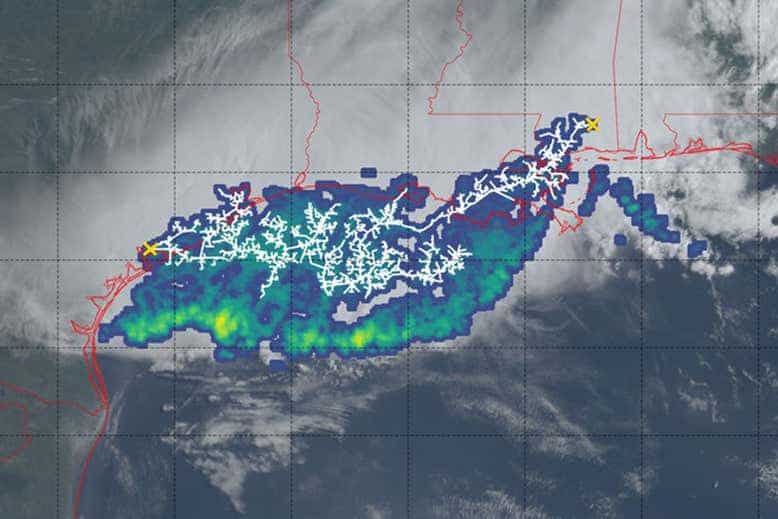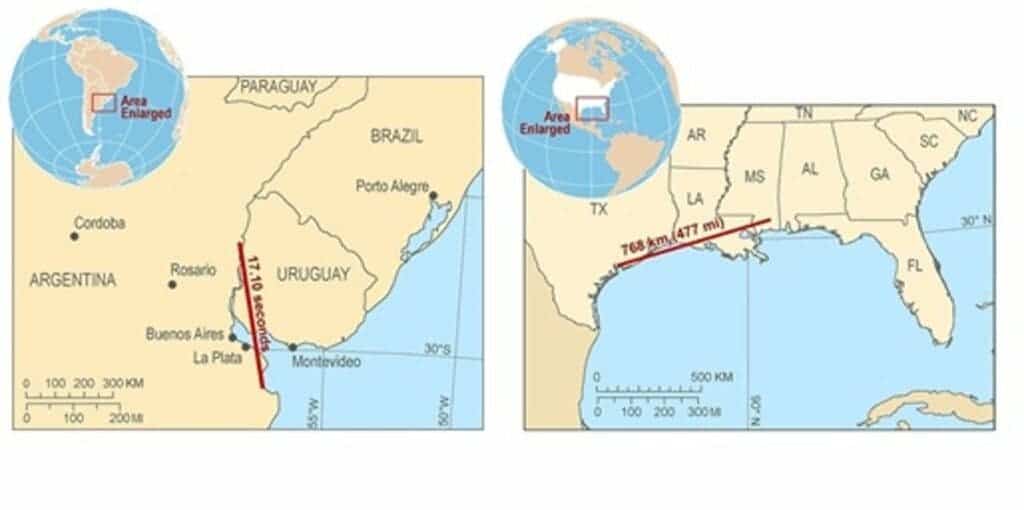Two separate lightning flashes, both occurring in 2020 in different parts of the world, have just been certified as the longest lightning strikes in recorded history. One is the longest in terms of distance, having stretched across 768 kilometers, the other is the longest-lasting lighting, having flashed for nearly 17.1 seconds before vanishing into the air.

The longest geographically-speaking lightning strike occurred above North America’s Great Plains on April 29, 2020, stretching across the southern United States, from Texas to Mississippi. Elsewhere, in the Río de la Plata basin in South America, a lightning strike flashed for about 17 seconds on June 18, 2020, during a thunderstorm that engulfed Uruguay and northern Argentina.
After careful measurements and double-checks, the Weather and Climate Extremes for the World Meteorological Organization (WMO) certified the two records and reported the findings this week in the Bulletin of the American Meteorological Society. According to the WMO, both new record ‘mega flashes’ were observed in hotspots for mesoscale convective system thunderstorms (a collection of thunderstorms that act as a system).
“These are extraordinary records from single lightning-flash events,” said Professor Randall Cerveny, rapporteur for the WMO. “Environmental extremes are living measurements of the power of nature, as well as scientific progress in being able to make such assessments,” Cerveny said. “It is likely that even greater extremes still exist, and that we will be able to observe them as lightning detection technology improves.”
Since the 1950s, researchers have been aware of lightning discharges on the order of 100 km in length, thanks to radar-based findings. Later, around 1989, scientists discovered “sprites” — large-scale electrical discharges that occur high in the atmosphere at about 50−90 km, within so-called “mesoscale convective systems”. One such sprite, which formed in 2007 over Oklahoma, was 321 km in length, making it the longest officially documented lightning flash of its time. Since then increasingly larger lightning flashes have been recorded every year.

The fact that the new record holder is hundreds of kilometers longer than those observed just a decade ago may sound startling. However, these findings are no indication that lightning is becoming more extreme — it’s just a matter of much better the monitoring instruments now at scientists’ disposal are.
Both record-holding flashes from 2020, just like previous other heavyweights more recently, were spotted by specialized instruments on geostationary satellites, which have a far wider field of view than radar and conventional weather monitoring stations. That’s not to say that climate change may not make extreme lightning more common. That’s something that scientists may establish several years from now once they’ve built a sizable historical record of lightning satellite observations.
That being said, lightning flashes aren’t all for show. They can start devastating fires and claim lives when they directly hit people. In the U.S., about 50 people are killed each year by lightning strikes, although 2021 saw a record-low number of lightning-related fatalities: only 11 deaths, according to the National Lighting Safety Council.
During dangerous thunderstorms, the World Health Organization (WHO) advises following the 30-30 rule – if the time between flash and thunder is less than 30 seconds, go inside and wait 30 minutes after the last observed flash to resume outdoor activities.









